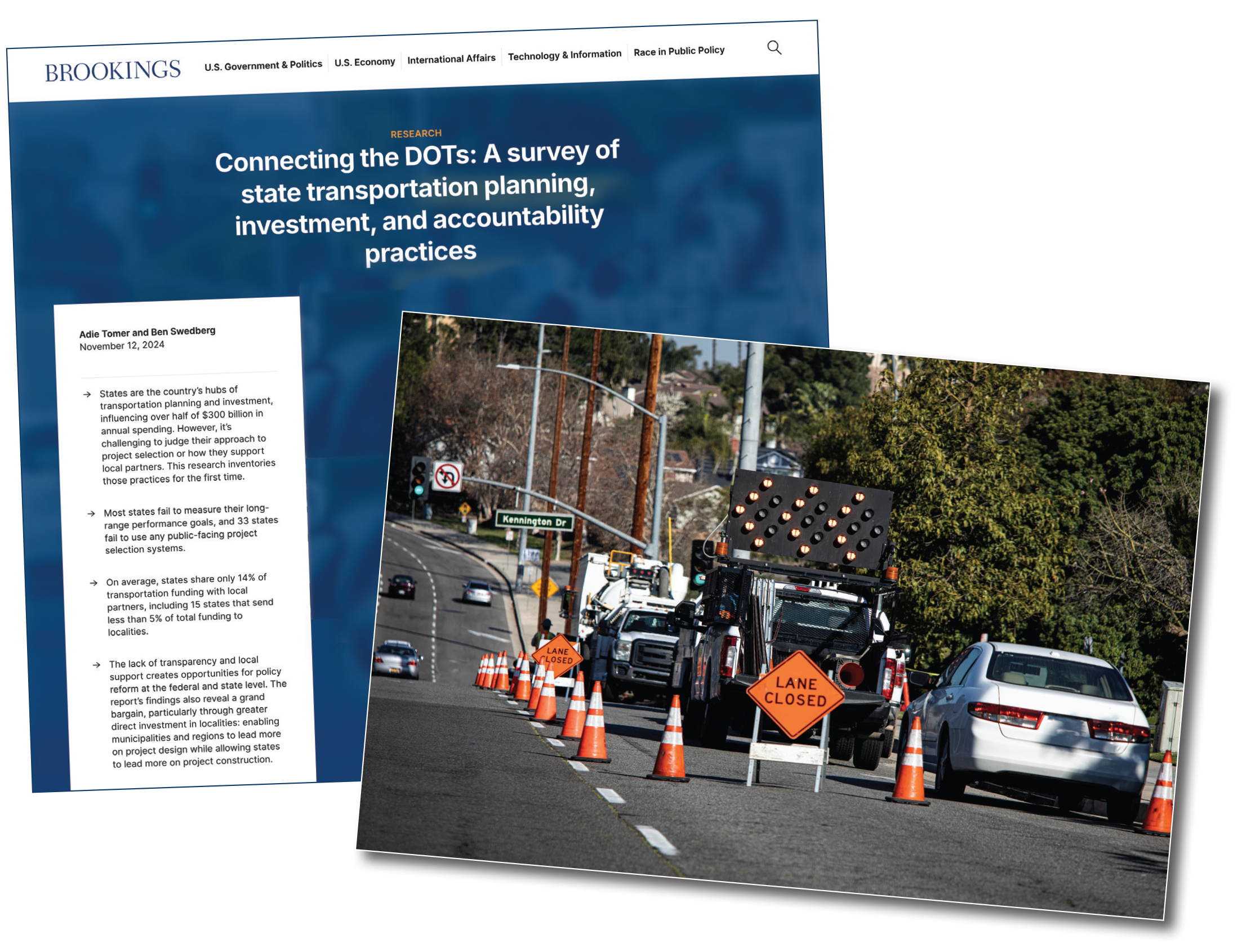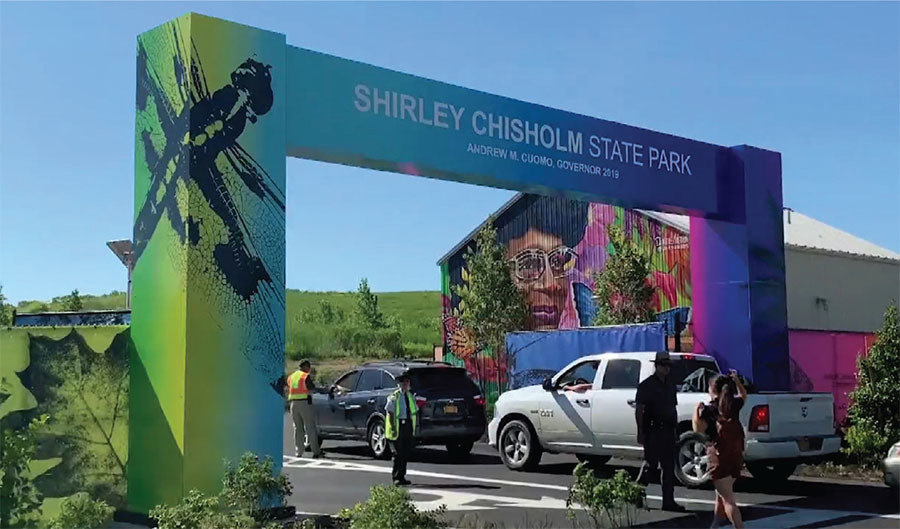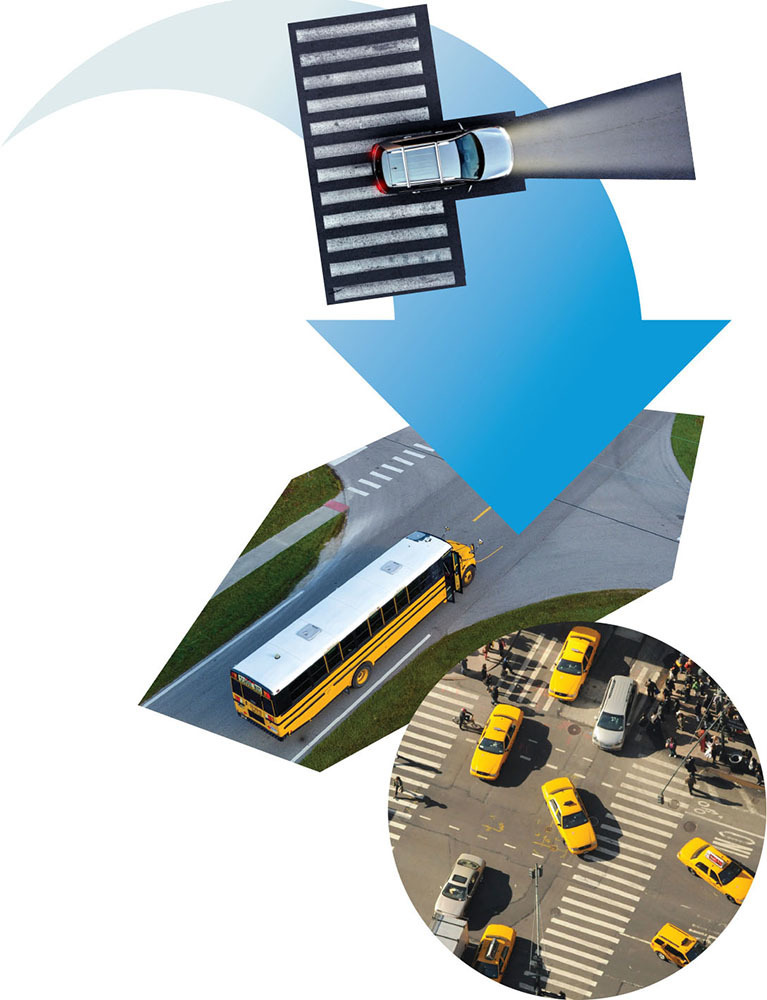July 2014
COMMUNITIES: GOVERNMENT
Oregon First to Launch Pay-Per-Mile Funding Plan
BY MARION WATERS, P.E., PTOE
This summer, as Congress examines how to resolve the looming insolvency of the federal Highway Trust Fund, the merits of short- and long-term solutions are being debated. A stagnant gas tax and an increasing number of highly fuel efficient vehicles has shrunk the pot of funds available. (See “Policy Perspectives,” p. 35.)
One approach that has received support in various sectors is a per-miles-driven fee for drivers. But, as the nonprofit Mileage-Based User Fee Alliance explains, to work on a national level, such a system needs to first be piloted, tested, and improved at the state and local level. A handful of states have embarked on that process. Oregon, which premiered the original gas tax, is out in front with the first mileage-based system to start in July 2015.
A History of Innovation
The state has been working on a solution to declining fuel tax revenues since 2001, when it created a task force to address the issue.
James Whitty is manager of the Oregon Department of Transportation’s Office of Innovative Partnerships and Alternative Funding, which administers the task force. He explains that Oregon comes naturally to its leadership role. As the first state populated in the west and the second to achieve statehood, its founding fathers couldn’t rely on timely help arriving from back east. They had to make up their own answers, Whitty says. “We are known for innovation as a state. It’s built into our culture.”
After examining 28 alternatives including expanding the gas tax, tolling interstate highways, and taxing tires, the task force deemed the per-mile fee the fairest option. The first road-user-fee pilot program nationally began in 2006. It relied on GPS data to levy a 1.2 cent fee per mile.
Privacy Concerns
Although the system deleted coordinates and location-identifying information, citizens’ reactions were “very very strong and hot,” according to Whitty. “The public just needed to hear GPS and their ears shut down. They didn’t hear about how we protected privacy.”
Communication with the public eventually clarified that GPS could be an option if the state offered other choices. Oregon’s current model is an open system that sets standards such as type of communication system and anti-tampering solutions and then allows the market to provide the technology. “It would not be a government box,” says Whitty.
A second pilot in 2012–13 demonstrated that such a choice-based, open system could work.
When the next phase begins, participants will be able to select among basic reporting (all miles driven reported with no GPS), advanced reporting (miles out of jurisdiction or off public roads not reported, requires GPS), switchable reporting (the ability to change between basic and advanced), and simplified reporting (assumes a maximum number of miles with no reporting necessary).
Various technologies can fit within those categories, including pay-as-you-drive insurance dongles, car navigation units, smartphones, and so forth. Procurement documents were issued in May with proposals due at the end of June.
Driving Change
Next summer, the Road Usage Charge Program will take off with a per-mile fee of 1.5 cents per mile for 5,000 volunteers. That will ensure that the system works well before it’s expanded, Whitty says.
How the legislature would then roll out the new program remains to be seen. It could apply to every vehicle, just highly fuel efficient vehicles (55+ mpg), or all fuel efficient vehicles (35+ mpg). Whitty thinks it would make most sense at 35 mpg and above.
“No one has ever done this before,” he says, explaining that the state is learning as it goes. “We couldn’t Google anything.”
But Oregon is working to help others who want to follow in its footsteps. “It took us 12 years to figure this out,” says the ODOT manager. “It’s got to be daunting for people.”
A Western Road Usage Charge Consortium, formed with Washington and Oregon’s Departments of Transportation, will research the issue on a regional level and is providing information to other states.
Oregon’s solution could catch on regionally or even nationally, Whitty says. He believes the states need to be the incubators of innovation with the federal government assisting with funding.
“The fuel tax is simply an old, tired mechanism, no longer viable,” he says. People wanted the per mile charge to work, he continues, but no one had come up with a plan that was publicly acceptable.
Although Oregon still has more to learn, he believes the state has “either gotten it right or come close…. This could be a viable replacement.”
Learn more at www.oregon.gov/ODOT and www.mbufa.org.


 Volunteering at NSPE is a great opportunity to grow your professional network and connect with other leaders in the field.
Volunteering at NSPE is a great opportunity to grow your professional network and connect with other leaders in the field. The National Society of Professional Engineers (NSPE) encourages you to explore the resources to cast your vote on election day:
The National Society of Professional Engineers (NSPE) encourages you to explore the resources to cast your vote on election day: A MILEAGE REPORTING DEVICE IS INSTALLED IN A VEHICLE.
A MILEAGE REPORTING DEVICE IS INSTALLED IN A VEHICLE. DONGLES FOR OREGON’S 2013 ROAD USAGE CHARGE PILOT PROGRAM.
DONGLES FOR OREGON’S 2013 ROAD USAGE CHARGE PILOT PROGRAM.




